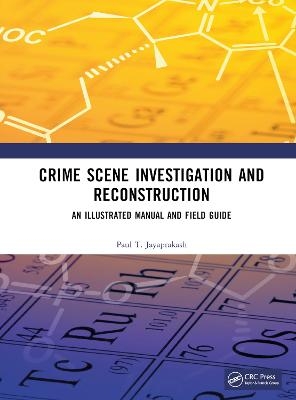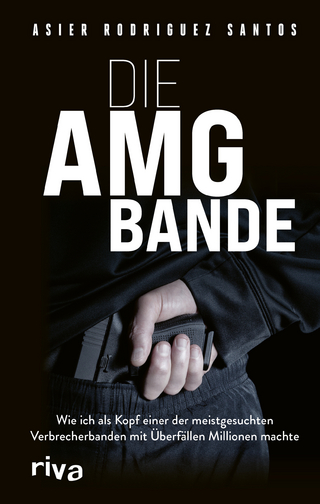
Crime Scene Investigation and Reconstruction
CRC Press (Verlag)
978-1-032-21166-4 (ISBN)
- Titel z.Zt. nicht lieferbar
- Versandkostenfrei
- Auch auf Rechnung
- Artikel merken
Crime Scene Investigation and Reconstruction: An Illustrated Manual and Field Guide provides methodologies to help investigators to think broadly when seeking out evidence at a scene and, likewise, utilize all the information from a case—especially the observable physical evidence, besides what are collectable, in reconstructing events.
In the introductory chapters the author highlights the importance of crime scene reconstruction when answering the question “How something could have happened?” From there, he goes on to explain the principles of exchange, identification, individualization and reconstruction. Here, the “observe-hypothesize” model, proposed in this field-guide, is presented: outlining how every source of information ranging from laboratory reports, opinions from medical doctors, statements of witnesses, and confessions of suspects should be reconcilable with the evidence-based reconstruction made in the crime scene. In this, the author contends that qualified crime scene generalists are the ideal professionals to frame scientific hypothesis and to make reconstructions. Practical recommendations, based on best-practice general crime scene procedures are provided while the second half of the book illustrate and outline how to deal with various types of major crime scenes, including fire deaths, exhuming buried human remains, sexual assaults, death by electrocution, explosion, drowning, poisoning, hanging, and more.
Since a picture is a worth thousand words, over 400 collective photographs and sketches are included throughout the book to illustrate the observational methods that are described. In addition, the field-guide provides several easy-to-follow flow-charts to serve as checklists to aid scene investigation in major types of crime scene. In this, Crime Scene Investigation and Reconstruction: An Illustrated Manual and Field Guide will help investigators readily recognize similar manifestations in crime scenes and to apply and use such techniques appropriately in their own work.
Paul T. Jayaprakash’s experience in forensic science spans over 43 years. As a professional in Crime Scene Investigation and Crime Scene Management, he has examined more than 3000 crime scenes and offered reconstructions—including exculpatory types—in cases of homicides, suicides, explosions, fire-related death, structure fires, use of firearms, fall from height, among others. With specialization in Forensic Anthropology, he has carried out skull-face superimposition on 658 skulls and testified in courts in 110 murder cases (1992-2004). He has also been a professor at major universities until 2017. He has written several articles for peer-reviewed journals and frequently been an invited speaker. Additionally, he has won the Government of India Home Minister's Award for Outstanding Contribution in Forensic Biology in 2000. That is the highest award in Forensic Science in India.
1. Introduction 2. Conceptual Foundations in Forensic Science and the Position of Crime Scene Investigation 3. General Crime Scene Procedure 4. Schema for Investigating Cases of Death by Hanging 5. Schema for Investigating Cases of Death Due to Traumatic Injuries 6. Schema for Exhuming Buried Human Remains 7. Schema for Investigating Cases of Death Due to Burns 8. Schema for Investigating Cases of Death Due to Fall from Height 9. Schema for Investigating Cases of Death Due to Electrocution 10. Schema for Investigating Cases of Death by Drowning 11. Schema for Investigating Cases of Death Due to Poisoning 12. Schema for Investigating Sexual Assault Cases 13. Schema for Investigating Cases Involving Firearms 14. Schema for Investigating Cases of Explosions 15. Schema for Investigating Structure Fires 16. Schema for Investigating Vehicle-Related Incident Scenes 17. Epilogue
| Erscheinungsdatum | 29.09.2022 |
|---|---|
| Zusatzinfo | 17 Tables, black and white; 20 Line drawings, color; 70 Line drawings, black and white; 125 Halftones, color; 231 Halftones, black and white; 145 Illustrations, color; 301 Illustrations, black and white |
| Verlagsort | London |
| Sprache | englisch |
| Maße | 210 x 280 mm |
| Gewicht | 893 g |
| Themenwelt | Medizin / Pharmazie ► Gesundheitswesen |
| Naturwissenschaften ► Biologie | |
| Recht / Steuern ► EU / Internationales Recht | |
| Recht / Steuern ► Strafrecht ► Kriminologie | |
| Recht / Steuern ► Strafrecht ► Strafverfahrensrecht | |
| Sozialwissenschaften ► Soziologie | |
| ISBN-10 | 1-032-21166-0 / 1032211660 |
| ISBN-13 | 978-1-032-21166-4 / 9781032211664 |
| Zustand | Neuware |
| Informationen gemäß Produktsicherheitsverordnung (GPSR) | |
| Haben Sie eine Frage zum Produkt? |
aus dem Bereich


